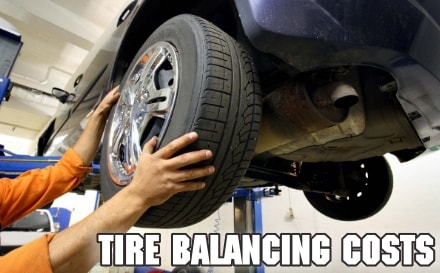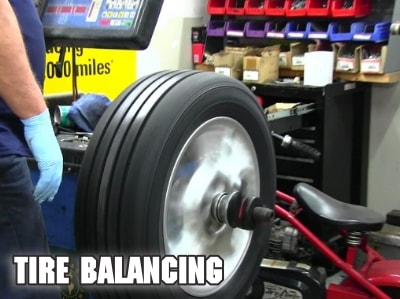As a car owner, you should make sure that the tires are always balanced to ensure safe and attentive driving. That said, tire alignment is no piece of cake, so you might need the assistance of a professional to assemble the wheels, shocks, and wheel bearings to make sure that your tires are firmly grounded so they can move smoothly on the road.
You can tell that tires are well-balanced when the weight of the wheel is squarely settled around the axle once they are mounted. Imbalanced tires, on the other hand, always lead to a patchy ride even when you’re driving on a smooth road surface. Below you can find tire balancing cost and useful tips about tire rotation and mounting.
How Much Does It Cost to Balance Tires?
Tire balancing cost is usually $16 per tire on average, and can be anything from $10 to $30 per tire (or 40 – 120 for all four tires) depending on the warranty offered and where you will have your tires balanced. Coupons can also help to significantly decrease the cost of tire mount and balancing, and you can even get the job done for free when you purchase tires in certain places.

A vibrating steering wheel is one of the first signs of misaligned tires. The more intense the vibration gets, the more urgently you’ll have to balance the tires, and the more you ignore imbalanced and misaligned tires, the more pressure will be applied to certain parts of the wheel, which will make the problem even worse. That’s when you’ll start to see extreme wear on that specific part of the wheel. Again, the longer you leave a tire in that condition, the more you run the risk of getting a flat tire right in the middle of the traffic (or worse, nowhere).
Tire Balancing Cost
How Much to Mount and Balance Tires?
The mount and balance cost depends on a number of factors, from the service center you choose to the type of warranty you’ve got and the services included in the job, which could include a pressure check.
Wheel Balancing – How To Properly Balance Tires?
If you know how to balance a tire and you are comfortable with handling the mechanics of a car, then balancing tires shouldn’t be that hard. You start by taking out the weights that are on the wheel so that there’s nothing weighing the wheel down, as the extra bulk will make it more difficult to balance them. Then, you lower the tire so that it’s squarely placed and well-positioned on the balancer.
Gently push the tire in and watch it rotate on the balancer. It should be nicely settled so that the heavier side is naturally drawn to the bottom, whereas the lighter side will be at the top. Once the wheel is still, make a mark on the lighter side using a visible marker.

Now, take the tire weights that you took out in the beginning and place them on the inside of the wheel, specifically on the lighter side which should be at the top. Slightly spin the wheel and see how it stands when it reaches the 3’o clock position to ensure that you’ve inserted just the right number of weights. Fine-tune the weights you’ve inserted in the tire until it stands still when you spin it for a full rotation.
Once you’ve inserted the weights, remove the wheel from the balancer and mount it onto your car once again, making sure that the nuts are tightly screwed and the jack has been lowered. If you’re not quite sure that the tire is properly balanced or if it seems like you’ve hit a snag, don’t hesitate to call on a professional for help.
How often should you have your tires balanced and rotated?
Most mechanical specialists recommend balancing your tires once every 10, 000 miles. You should also perform wheel balancing every time you get one or more of them replaced.
While it is possible to balance your vehicle’s tires on your own, you should make sure that you‘re using the right tools and machinery so that you can get it right the first time. That said, getting your tires balanced by a professional won’t set you back that much because it’s a relatively affordable procedure when considering the benefits.
If you don’t have a “go-to” auto shop or mechanic to consult, simply go online and input keywords like “cost to balance tires”, “wheel balancing cost”, “tire replacement cost” or “tire mounting cost” on a search engine like Google.
Your results should show tire installation cost or tire balance cost, as well as useful information on how often, should tire be balanced, how much does it cost to replace a tire and how much to balance tires.
Still, you’ll probably come across plenty of misunderstandings when it comes to the whole tire mounting and balancing procedure and variations on how much to install tires. Worn-out tires, for example, will require more than a mere balancing procedure, and you won’t have a smooth ride again until you replace them. If your car is still vibrating after you’ve balanced the tires, then you definitely have to get it checked by an expert.
In this guide you will find:
